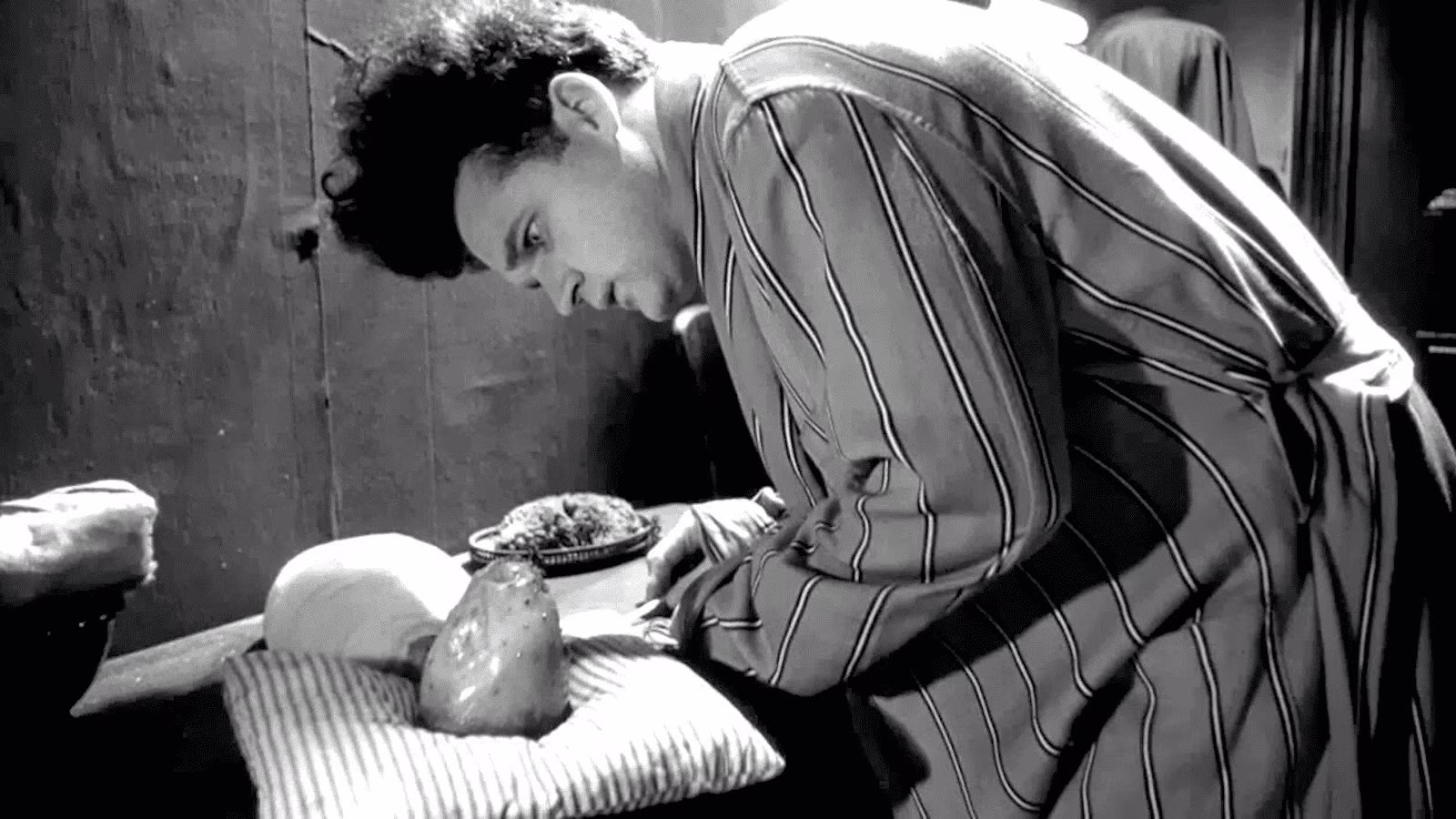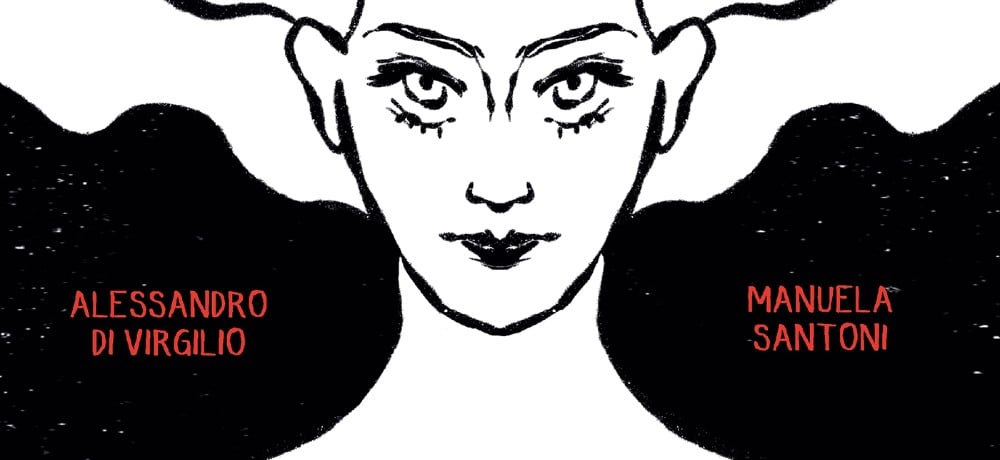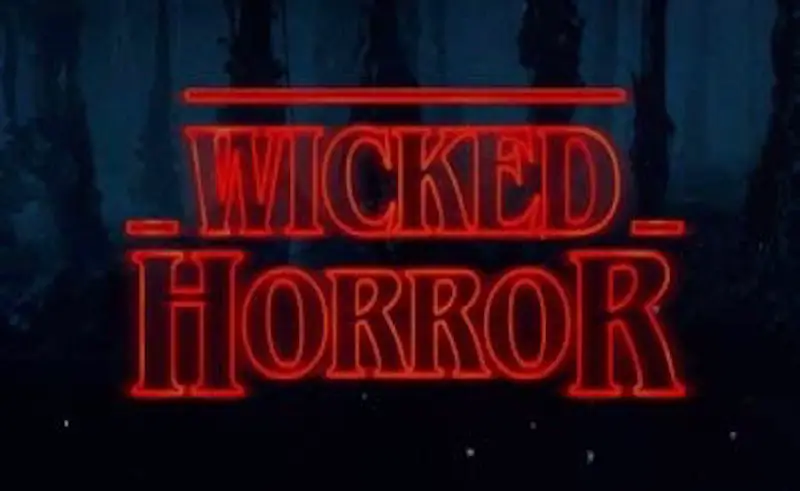Killer Women With An Axe to Grind, Part 2
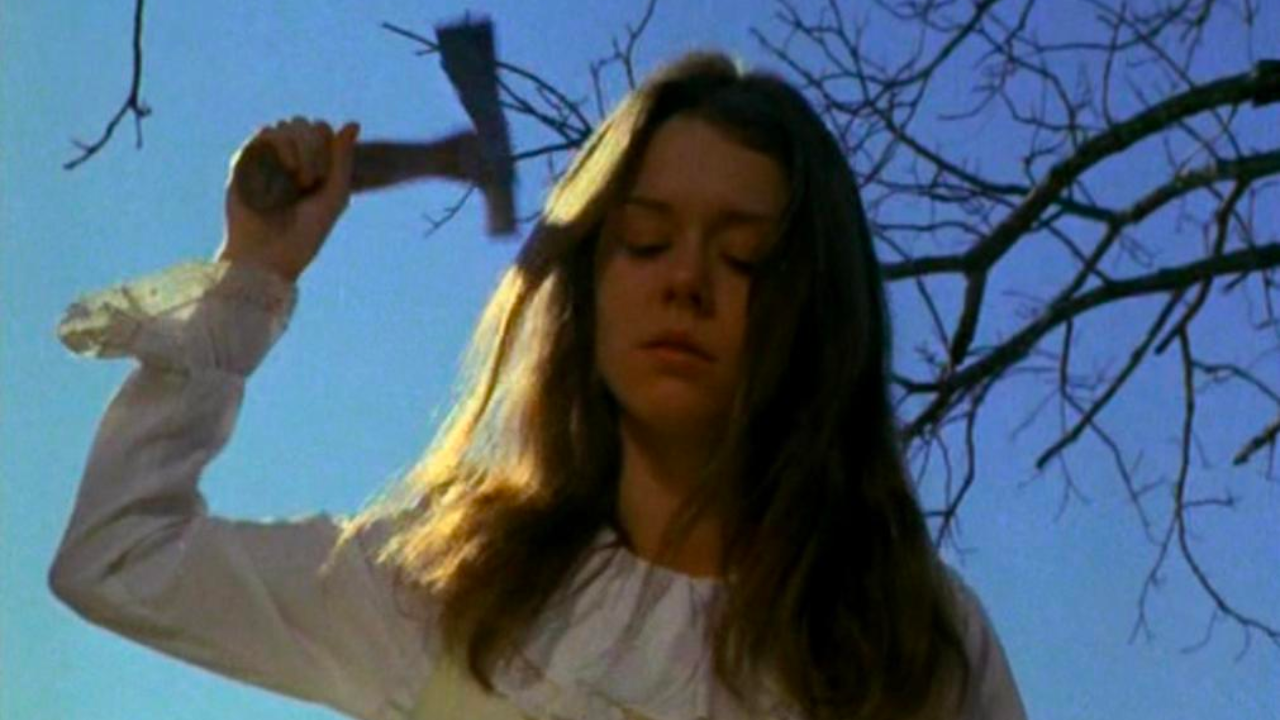

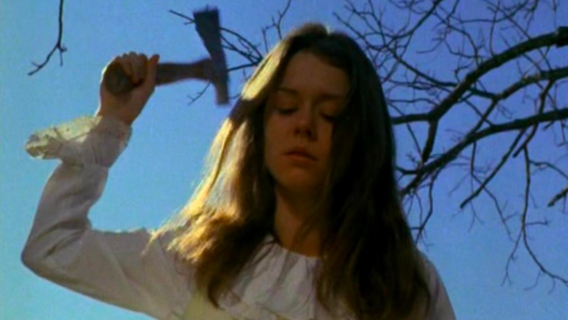
This is part two of an article series about female axe murderers in horror. Read part one here.
Reflecting on the way Hulu’s Candy attempts to turn tragedy into pop culture, I discovered that I seriously resent the true crime miniseries as a concept. There is a restlessness in our collective ideation of murder and victimization that art is constantly trying to wrestle with. But in recent years, it seems like high-profile true crime stories are adapted and, in some cases, re-adapted to harness the zeitgeist without understanding what the times demand of its creators.
Where Lizzie Borden has been (for better and worse) elevated to iconic status, the attempt to frame Candy Montgomery as a similar kind of anti-hero, smirk and all, struck me as lazy and cynical. It may be that the culture that rewards sloppy media like this is a void, and we’ve been getting returns on that emptiness several times over. Stories of real human suffering are mindlessly fed into the prestige TV machine, popping out content that eats five to 10 hours of its viewers’ time.
Also Read: It’s Alive!: Horror’s 9 Best Frankenstein-Inspired Films & TV Episodes
In my fixation with women axe murderers, the antidote to this misery filler is found in cinema, where there is a glut of titles to choose from on the subject. In the case of the following films, what their respective creators have imagined far surpasses the rote approach of modern true crime and historical fiction. And the films themselves give the impression of being ripped from the headlines.
Frederick R. Friedel’s Axe (initially titled Lisa, Lisa) is a lean rape-revenge film that hangs with the best of its era. Clocking in at just over an hour, Friedel’s Southern gothic about a girl named Lisa (Leslie Lee) defending her home from a gang on the run is a fierce exercise in tension and mood. Shot in nine days on a shoestring budget, not a single frame of its short-end film stock is wasted. Accomplished genre cinematographer Austin McKinney soaks in the atmosphere of the film’s North Carolina setting, giving Friedel the space to let his imagination run wild.
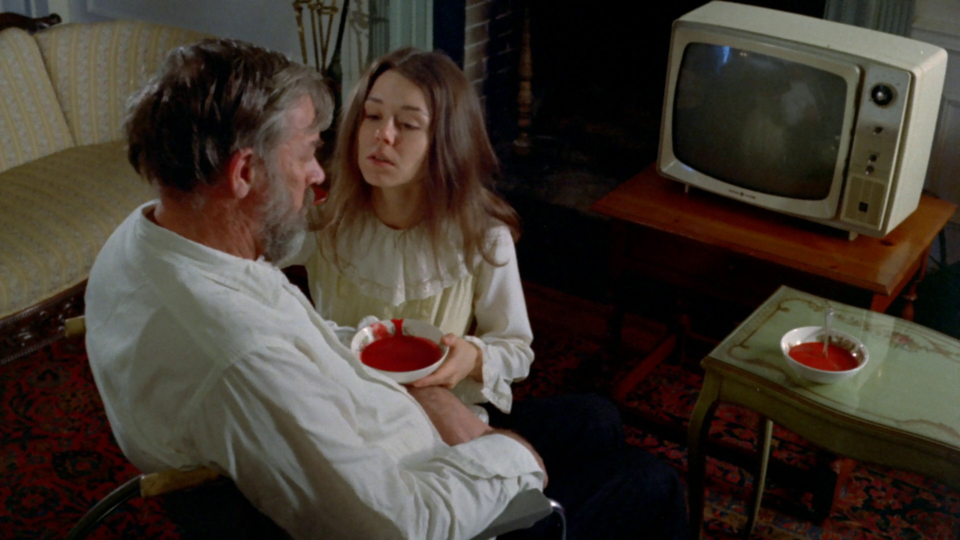
Despite a blunt title, courtesy of local distributor Harry Novak, the film is quite evocative. Axe establishes its tone using the chiaroscuro lighting technique of a scrappy film noir in its opening scene where sparse, theatrical aesthetics meet the harsh reality of the violent acts on screen. The hard shadows on the walls of a small room in the Hotel Charlotte, and the searing light covering the faces therein, play to the film’s themes while underlining the menace of the three gangsters: Steele, Lomax, and Billy. They are first seen shaking a gay man down for money he owes, which drives his partner to suicide. Fleeing from the scene, the gang sexually humiliates a convenience store clerk before arriving at the farmhouse where they eventually meet their fate.
Also Read: ‘Yellowjackets’ Season 2: The Genius Of Lauren Ambrose as Adult Van
Released only a year apart, Axe shares a few thematic threads with The Legend of Lizzie Borden. Both films are about women who are pushed to the brink after being assaulted. Both utilize the various creaks and dark corners of their respective settings to build anticipation for ax murders. Axe has no real-world inspiration, yet it moves with a rhythm determined entirely by the elements in front of the camera. There are no obvious flourishes of set design and art direction, making the farmhouse feel as authentic as possible. The unforgiving winter, during which the film was shot, imprints itself on the stern faces of everyone involved.
Lee’s performance is otherworldly, however, and Friedel captures the mundanity of Lisa’s life as a caregiver to her disabled grandfather (Douglas Powers) with an undercurrent of madness. Farm life for Lisa is a mess of broken eggs and dead livestock. But the viewer finds her at a point of dissociation, exemplified by a scene of her standing in front of a mirror in her bathroom quietly flirting with a straight razor. The gimmick of the film is hinted at by its original title. Lisa, Lisa gives an ironic, nursery rhyme quality to a narrative that teases a young woman’s fractured interior. The drama Friedel creates is subtle. But this simmering dread soon boils over. And the director threatens his audience with a brief, striking shot of Lisa crossing the background while her hatchet lies predominantly in the foreground.
Also Read: ‘Teeth’ and The Anatomical Possibilities of Vagina Dentata [Science Of The Scare]
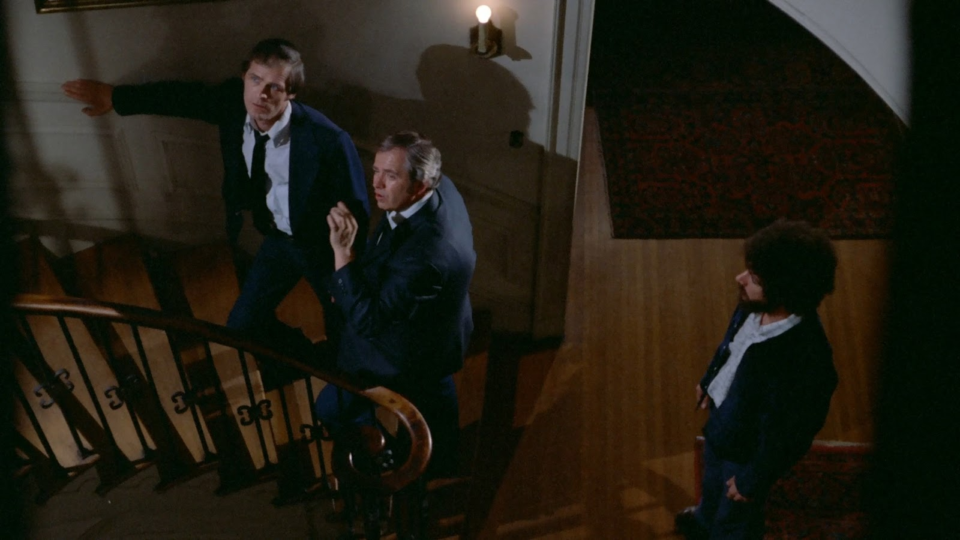
When Lomax (Jack Canon) and his crew attempt to hide out on the farm, Lisa is further subjected to domestic responsibilities, as she is made to cook and clean up after them. Friedel pushes the leeriness of their gaze onto the audience while making a direct connection between their murder and the humiliation of the gas station clerk. These men use force to bend reality to their will without any expectation of resistance.
When this destructive urge comes for Lisa, Friedel (who plays the cowardly Billy) employs an editing style that shockingly articulates the psychological impact of the violence she endures. Axe’s rape scene is rapidly intercut with paintings of smiling women that isolate her screams on the soundtrack. It’s as viscous as it is surreal, and Friedel doesn’t hold the promise of retribution over the audience for long. During the scene, Lisa uncovers the same razor she held against herself earlier. This time, she trains it on the back of Lomax’s neck and begins sawing. This dreamlike sequence is full of contradictions, each working to strengthen the idea at its core: Lisa’s murderous rage has been unleashed and we are meant to be entirely on her side.
This sequence is also eerily reminiscent of a moment in The Legend of Lizzie Borden, which I previously covered in detail. But putting the images of bloody women standing over their works side by side, they begin to deviate in their respective contexts. Their murders are both motivated by opportunity, a conflicted sense of identity, and a chance at freedom. But where Lizzie’s problems are later hashed out in the courts, Lisa’s lack of resources and proximity to the remaining gangsters makes her situation more desperate.
Also Read: ‘Savage Weekend’ And The Unapologetically Queer Nicky [The Lone Queer]
As Steele (Jack Canon) and Billy grow more suspicious, Lisa has to think on her feet in order to survive her ordeal. All while still taking care of her grandfather, who later bears witness to her violence but cannot verbalize his fear. After Lomax’s death, and subsequent dismembering via hatchet, Lisa’s agitated state of mind determines the film’s pace. She cleverly tries to get Billy to help her move a chest, where she’s hidden Lomax’s remains, up to the attic but is found out. Yet she easily convinces Billy that the gang has turned on each other, and he falls prey to the film’s own gimmick in assuming that Lisa couldn’t possibly have killed the man herself. Friedel swiftly proves her first kill was not a fluke.

With Billy investigating the murder of Lomax, Lisa is confronted by Steele. He tries to assault her and, in their struggle, Lisa grabs a hatchet to protect herself. She succeeds. The kill is as vicious as before, but this time her grandfather is a witness. His shocked expression follows her as she nonchalantly cleans up and fixes dinner for them and Billy. The bright, scarlet color of the tomato soup they eat is nauseatingly similar to the color of blood in the film. Billy makes this connection himself when he finds Steele’s ring in his bowl. In an attempt to evade death by hatchet, he runs into fire from the police, who have been on the gang’s trail all along.
Also Read: 5 Disturbing Queer Horror Films To Keep You Up At Night [New Queer Extremity]
The electronic score by George Newman Shaw and John Wilhelm oscillates, mimicking police sirens that are heard underneath before returning to its main, bluesy theme over a shot of Lisa feeding her grandfather. The film returns to the haunting ambiance of its opening titles, but the audience is left irreparably shaken by the events that took place at the farmhouse.
Nearing its 50th anniversary, Axe continues to be valuable to modern horror. For a project initiated by a first-time filmmaker, there’s hardly a thing in it that’s phony. Friedel’s approach of melding gothic horror with hard-nosed film noir is perfectly suited to the times. The film occupies a space between the cynicism of New Hollywood filmmakers and the borderline snuff sensitivities of their independent horror contemporaries. The film’s budgetary limitations only add to its mystique, and its short runtime contains a brutal, textured story. Indie horror is where all the innovation in the genre occurs. Friedel is one of a long list of creators whose ingenuity pushed horror film language forward. And he did so with the simple concept of a perturbed farm girl who happens to be nasty with a hatchet.
Also Read: ‘Smile’ Is A Scarier Version Of ‘The Ring’
Whether or not it’s plausible that Lisa could take on three gangsters on her own is irrelevant. If a similar incident were to make the news tomorrow, Lisa’s survival would be stunning but no less resonant. The threat of violence from unhinged men is, unfortunately, ever-present. Horror films have always drawn on real-world anxieties to encapsulate the struggle between monstrous people and those they victimize.
Speaking about the experiences that shaped last year’s Watcher, director Chloe Okuno says that something as simple as being followed home at night can make for personal filmmaking. Her feature debut about a mysterious voyeur stalking an American couple in Romania extends the fear that many women have about being abducted to include the frustration that comes with being gaslighted by loved ones. Watcher is terrifying and slyly manipulative in how it charts the mental spiral of its protagonist as she investigates the identity of her stalker. The film is a showcase for Okuno’s talents as a director, though it should be noted that she proved she had the juice almost 10 years ago with her short film Slut.
Also Read: ‘Scream’ is a Scary Movie Franchise Afraid to be Scary
It centers on a shy teenage girl from rural Texas named Maddy (Molly McIntyre) as she tries to explore her sexuality during a tumultuous period. It’s 18 minutes of throwback horror goodness, complete with set and costume designs that are perfectly frozen in time. This film shares strands of DNA with Friedel’s Axe in its themes, setting, and atmosphere. But, most importantly, it not-so-subtly hints at and delivers on a confrontation with the titular weapon.
Slut is partly set in a roller rink, where the mellow country stylings of Audie Henry play to a group of shitheads trying to mack on Jolee (Kasia Pilewicz), a local beauty queen. Maddy is rejected by that same group before meeting a drifter (James Gallo) who tells her he prefers it when women aren’t dolled up and that she’s better off without the attention. He is later seen going home with Jolee, to Maddy’s dismay. She calls the drifter’s bullshit early on, opting to crawl out of her shell by experimenting with make-up and DIY clothing. Her debut in this newly adopted style nets her a hookup with one of the boys at the roller rink, but the drifter keeps a close eye.
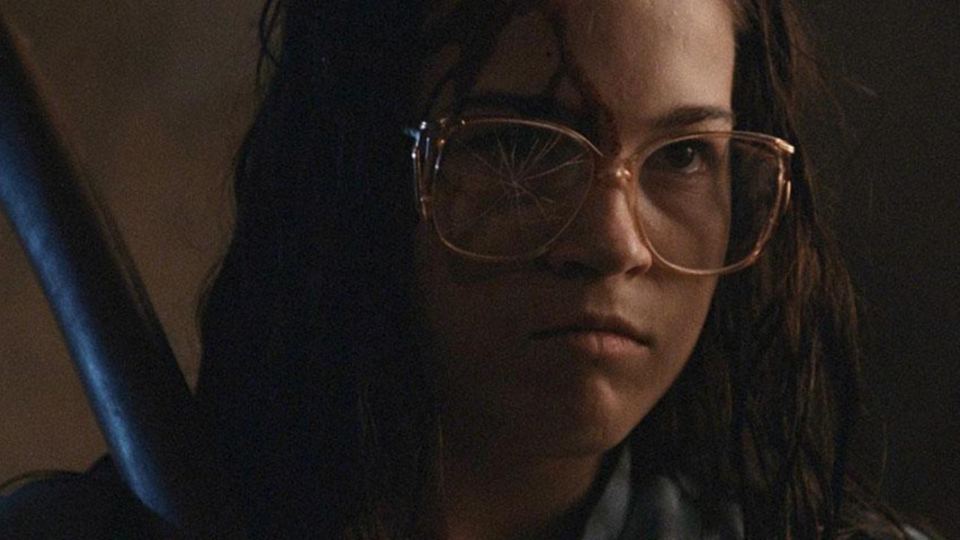
Back at home, in the presence of who she thinks is her grandma, Maddy excitedly talks about getting laid before realizing she’s walked into a Red Riding Hood deal. The drifter chases her upstairs, where they have a brawl which culminates in the drifter crashing through the ceiling after Maddy crushes the floor beneath him with the ax from earlier.
Also Read: ‘Calvaire’ and Horror in the Absence of a Matriarch [Matriarchy Rising]
Slut, from its title, flips the regressive “not like other girls” attitude that might have characterized Maddy if she were poorly written. Okuno shows us that Jolee isn’t at fault for presenting how she does because men like the drifter will always find an excuse to justify their hatred against women. “Half the fun’s the chase. Girls like you just make it too damn easy,” he says, right before dragging Jolee from his car bumper.
Connections between this film and Axe are likely serendipitous, due to the simple fact that lonely girls from the boonies make for good horror protagonists. But it’s fascinating to note how these films complement one another while differing in key ways. Okuno employs a part-fantasy, part-realist quality to her own directing style. She never betrays the gimmick of a one-girl army against an aggressor and makes great use of a rural setting to liven up her cinematic world. Both Lisa and Maddy live in an ambiance of cathode rays, which cover the living rooms where their grandparents spend most of the day. Each girl retreats to her mirror to investigate their deepest insecurities.
Also Read: ‘Psycho II’ is a Legacy Sequel Done Right
Where these films deviate is in their philosophical outlook. Axe is the more pessimistic of the two, showing its audience the abjectness of Lisa’s existence even without the presence of the gang. Identity is a fraught notion for Lisa. There is a slow realization that life will not get any better than it is. Maddy has the choice to be a new person. She is free in a way Lisa could only dream of. Though they both stare at their reflections longingly, Maddy’s mirror is a luxury that she can enjoy in the privacy of her own room. Whereas, Lisa must force herself to stand in the middle of a shared bathroom: a further reminder that the life she lives is not entirely hers.


When Lisa swings her hatchet, it is with a lifetime of pent up fury. What she takes back from the gang is control of her relative peace at the farmhouse. Okuno’s approach to murder is equally motivated by character. Maddy’s fight scene is messy and brutal, similar to Lisa and Steele, but the choreography is geared toward a more symbolic finish. Maddy is able to trap the drifter in a sweet spot. As her creaky floorboards give under the weight of the drifter, he is hanged with his own rope by the leg of Maddy’s humble dresser. The vanity mirror Maddy uses to apply her makeup is situated on top, an ironic rebuke of the drifter’s misogynistic worldview and a win for sluts everywhere.
Also Read: Rage Against the Machine: ‘Take Back The Night’ Tackles Rape Culture
Axe and Slut are intense bursts of genre filmmaking that exemplify the tensions of their respective eras. The grimness of Friedel’s work makes its onscreen victories less celebratory in tone, but its anger is undeniable. Okuno’s decision to set her film in the ‘80s resonates in a media landscape that tends to romanticize the past in order to pander to a nostalgic viewership. And the musical rhythm dictated by editor Michael Block eases the film into its harrowing finale with a poetic flare.
In horror, it has always been possible to mediate harsh personal truths and the cruelty of the outside world to an audience looking for a thrill, or even a cathartic release. We can sift through box office receipts and nebulous aggregated critic scores but the fact is that dangerous times demand art that is willing to represent it unflinchingly. And where prestige TV doesn’t cut it, the hungry, demented heart of indie horror filmmaking will.


